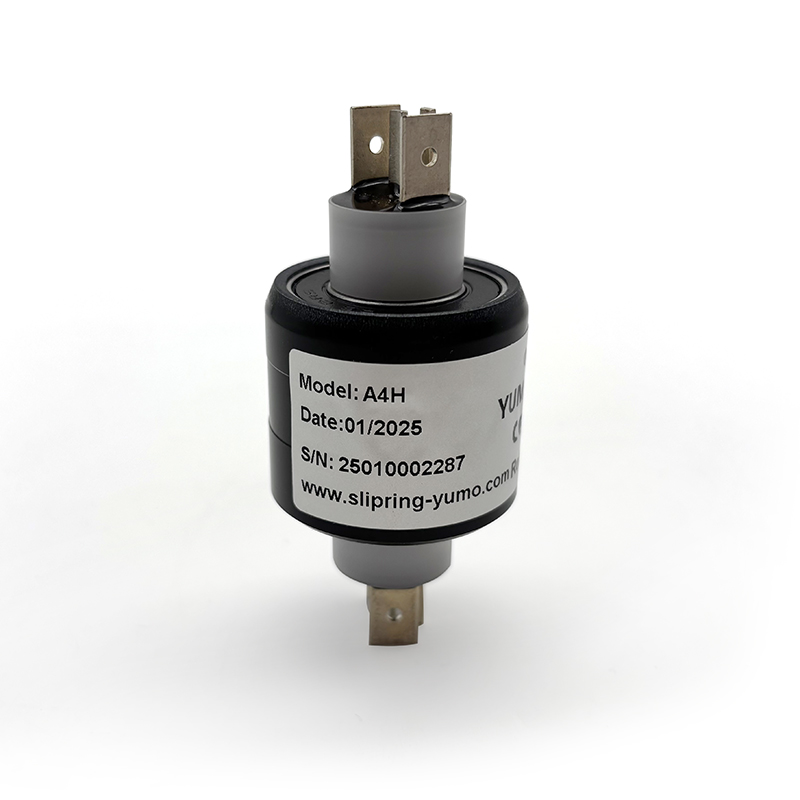What is an Incremental Encoder?
Incremental encoders generate a series of electrical pulses as the shaft of the encoder rotates. These pulses correspond to the movement of the shaft and can be counted by a control system to determine the position of the shaft relative to a reference point.
Key features of Incremental Encoders:
· Pulse Output: The encoder generates a series of pulses per revolution (PPR), which the system counts to track movement.
· Relative Positioning: Incremental encoders measure changes in position relative to an initial reference point or home position.
· No Absolute Position: If power is lost or the system is powered off, the encoder loses track of its absolute position and needs to be reset upon startup.
Applications of Incremental Encoders:
· Speed Measurement: Since the encoder generates a pulse for every small rotation, it is well-suited for measuring rotational speed.
· Relative Positioning: Incremental encoders are ideal for applications where only relative position is important, such as conveyor belts, simple motion control, or some robotic arms.
· Cost-Effective: Incremental encoders are typically less expensive than absolute encoders, making them a good choice for many general-purpose applications.
Advantages of Incremental Encoders:
· Simple Design: They have a straightforward design, making them less expensive and easier to implement.
· High Speed: Incremental encoders can operate at higher speeds than absolute encoders, making them suitable for applications requiring high-speed rotation.
· Flexible Resolution: The pulse rate can be easily adjusted, offering flexibility in resolution for different applications.
Disadvantages of Incremental Encoders:
· Loss of Position After Power Loss: Since they do not track absolute position, incremental encoders cannot recover the exact position after a power failure or reset.
· Need for Homing: The encoder must always return to a home position before it can accurately measure position, which can be time-consuming.
What is an Absolute Encoder?
Absolute encoders provide a unique digital code for each position of the shaft. Unlike incremental encoders, each position is encoded with a unique number, allowing the system to know the exact position even without referencing a starting point. This means that after a power outage or reset, an absolute encoder can immediately provide the correct position without needing to recalibrate.
Key features of Absolute Encoders:
· Unique Code for Every Position: Each position has a unique binary or gray code that the system can interpret to determine the exact location of the shaft.
· No Need for Homing: Absolute encoders don't require a reference position since they retain their position information even when powered off.
· High Precision: Absolute encoders are ideal for applications that require high precision and reliability.
Applications of Absolute Encoders:
· Robotics: Absolute encoders are commonly used in robotics for precise positioning, where knowing the exact position of a joint or part is critical.
· CNC Machines: CNC systems, which require exact positioning and high reliability, frequently use absolute encoders.
· Elevators and Elevation Systems: Absolute encoders are ideal in applications like elevators, where precise and continuous position tracking is essential for safety and accuracy.
Advantages of Absolute Encoders:
· No Loss of Position: Since the encoder tracks absolute position, there is no need for homing after a power cycle, making them ideal for systems where uptime is critical.
· High Precision: Absolute encoders offer a higher level of precision than incremental encoders, making them ideal for high-performance applications.
· Continuous Feedback: They continuously provide accurate position information, even during system power cycles.
Disadvantages of Absolute Encoders:
· More Expensive: Due to their more complex design, absolute encoders are generally more expensive than incremental encoders.
· Slower Speed: Absolute encoders may not perform as well at high speeds compared to incremental encoders, especially in applications that require frequent updates of position data.
|
Feature |
Incremental Encoder |
Absolute Encoder |
|
Position Information |
Relative position, changes from home or reset. |
Exact position, unique code for every position. |
|
Power Loss Behavior |
Loses position, needs reset. |
Retains position, no need for reset. |
|
Speed Capability |
Can handle higher speeds. |
May have lower speed capability. |
|
Precision |
Moderate precision. |
High precision, ideal for critical applications. |
|
Cost |
Generally less expensive. |
Generally more expensive due to complexity. |
|
Applications |
Speed control, simple motion tracking, low-cost applications. |
Robotics, CNC, medical equipment, critical systems. |
|
Installation Complexity |
Easier to install, fewer components. |
More complex installation and calibration. |
· Choose an Incremental Encoder if your application requires high-speed tracking, cost-effectiveness, and can tolerate the need for homing after a power loss. They are ideal for simple motion control, speed measurement, and systems where relative position is sufficient.
· Choose an Absolute Encoder if your application requires precise position tracking, high reliability, and the ability to continue tracking after power loss. Absolute encoders are perfect for applications in robotics, CNC machines, and systems requiring high accuracy and continuous feedback.
Both Incremental Encoders and Absolute Encoders have their unique advantages and are suitable for different types of applications. When deciding which one to use, consider factors like the need for precision, speed, cost, and whether or not the system can tolerate power loss and the need for homing. Understanding these differences will help you choose the right encoder for your specific requirements.
